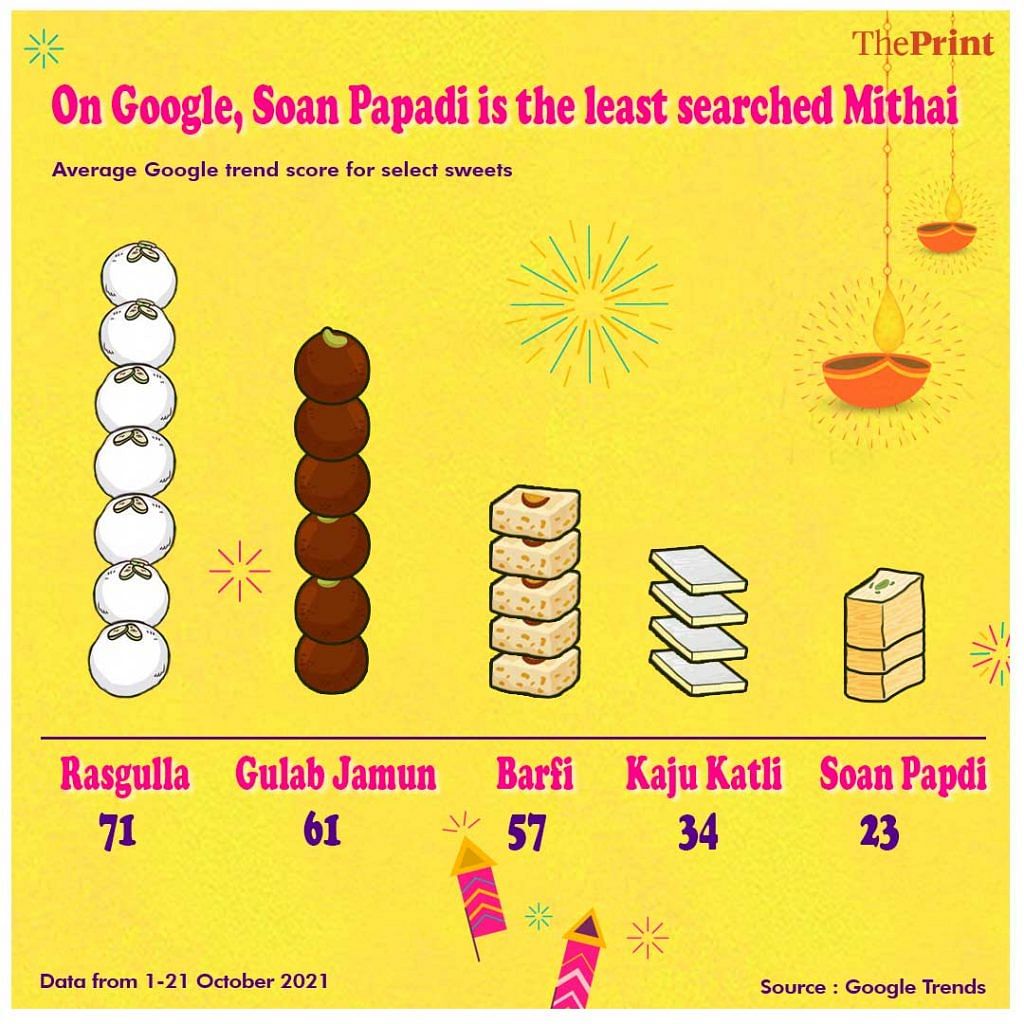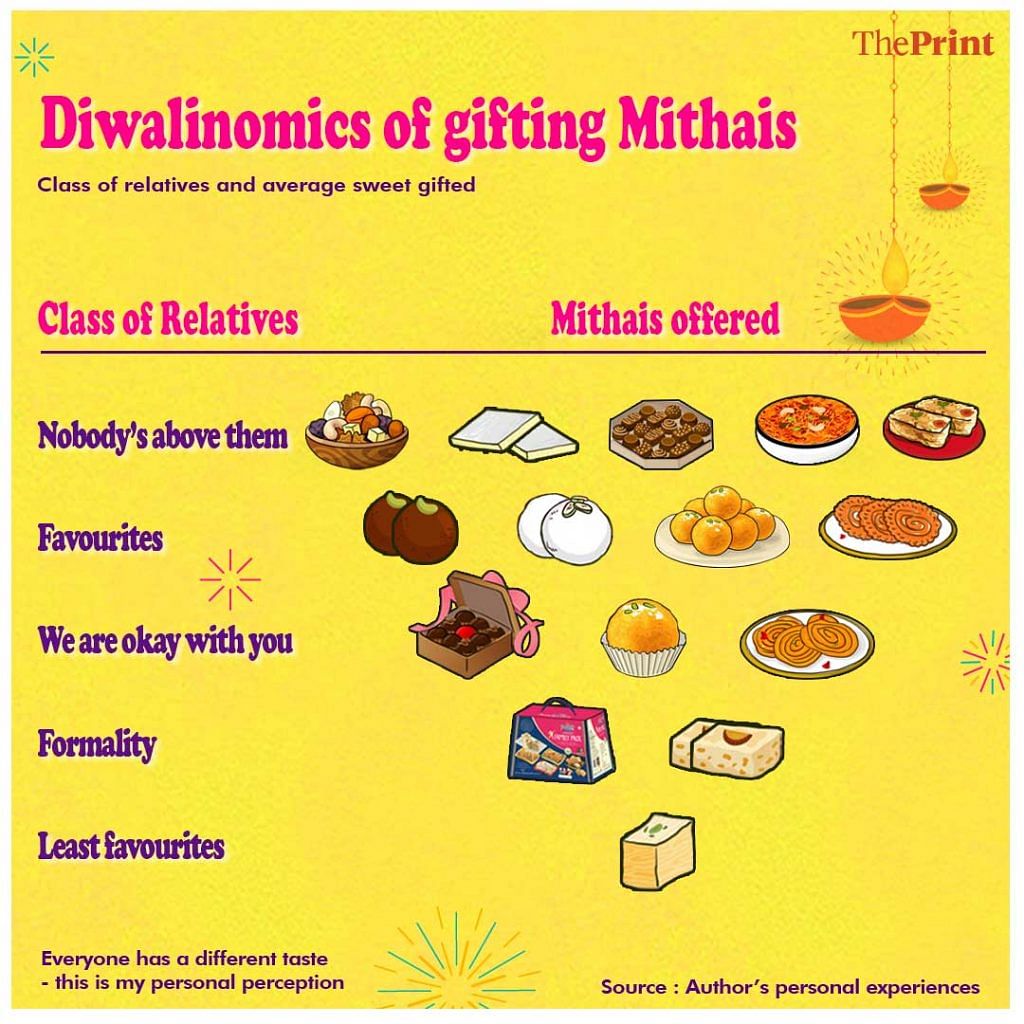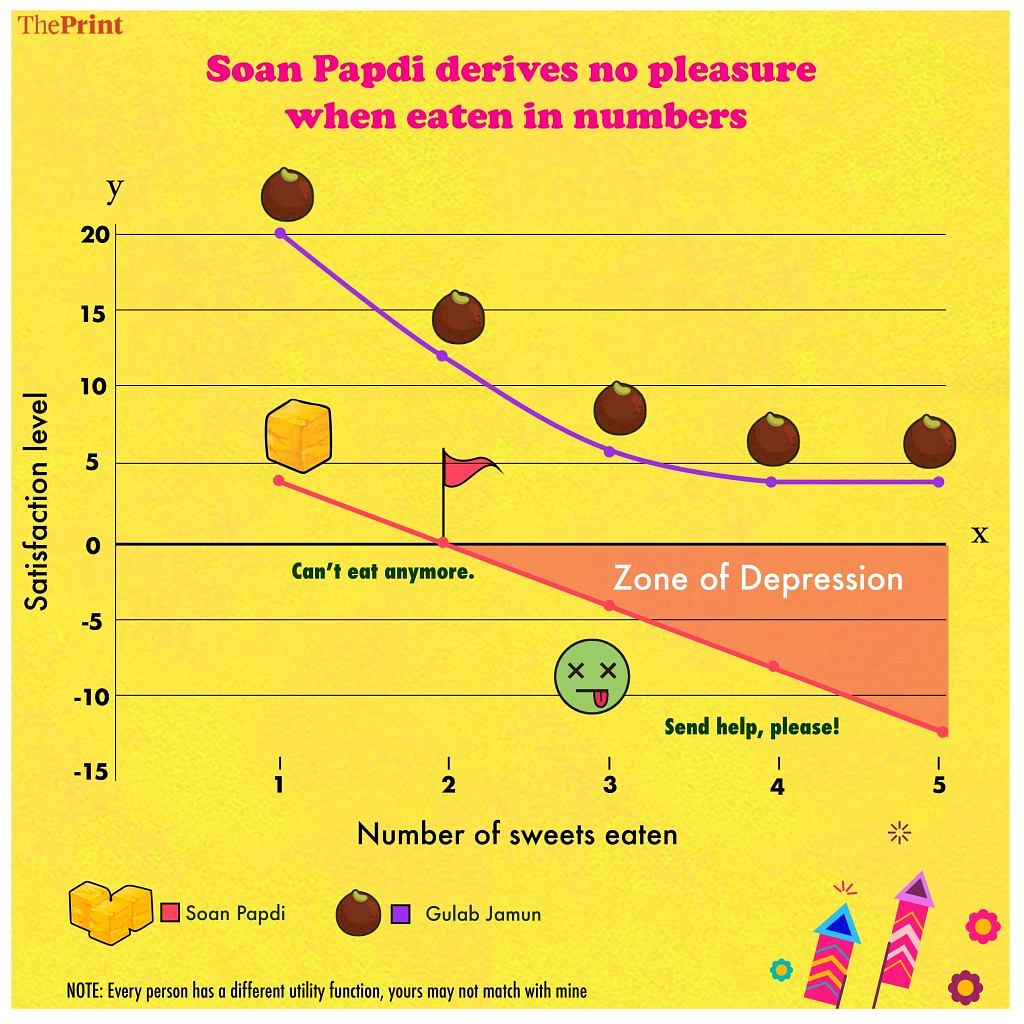Form of words:
DIwali is back and the markets are buzzing with sweets, the streets are buzzing with firecrackers and the wind… the less said about it, the better. However, there’s no joy in celebration without adding some added sugar and calories to it.
Thanks to the diversity of India, we have so many sweets that I can write an opinion about each of them. But for that, I am going to confine myself to the most hated one – Soan Papdi.
For the past few years, I have been seeing jokes and memes on social media about this sweet made of gram flour, maida, sugar and ghee. You can take a look at some of the smartest people on this Twitter Page. But what about the contempt against Son Papdi? How does a simple cheap dessert become the subject of hatred?
The answer lies in its economics.
Read also: Diwali sweets and snacks are going on. Here’s How You Can ‘Health-IFE’ Them
Interested in Son Papdi
When I used Google Trends data to look for statistics about people’s interest in buying sweets, I found some clarification. Compared to our all-time favorites – gulab jamun, rasgulla, kaju katli, and barfi – the poor soan papdi also didn’t cut it.
Top questions about each dessert translated into its price. People usually look up the price per kilo of a particular dessert, or if it’s a specialty of a restaurant, they’ll even add its name to their Google search.

The data shows that on an average between October 1 and 29 this year, rasgulla was the most searched dessert with a score of 71, followed by gulab jamun (61), barfi (57) and kaju katli (34). . Son Papdi got only a modest score of 23 and it is not just this year. The trend was similar during the same period last year.
So it is clear that when one is looking at the price of sweets, soan papdi is not the natural choice. So why wouldn’t they mind when they get that same thing completely out of the blue?
Read also: If not pollution, Hindu groups still have 2 good reasons to support a ban on firecrackers on Diwali
barometer of relationships
Giving you Soan Papdi against a relative also depends on your level of attachment. So if a very close relative, who is above all, gets the most special gift you can afford, which you don’t like at all, you are the least worth giving – Soan Papdi.
In my observation, however, Soan Papdi cannot be given as a standalone gift to your loved ones. So our very smart mothers usually give it to relatives, such as a set of glasses/cutlery, bowls etc. By doing this, neither the relative finds the soan papdi objectionable nor do we feel the guilt of disposing of it. Out of this – killing two birds with one stone.
If you have to offer a standalone dessert, the top tier usually gets dry fruits, artisanal chocolates, kaju katli, gajar pak/halwa and milk cakes from a local specialist.

Just soan papdi and nothing is a sign to mend your relationship with the one who gives. Maybe start by not giving them soan papdi as a return gift? Things are different if a person prefers soan papdi. No offense, but most people don’t consume it in bulk like they do with other sweets.
If you are not close to anyone yet receive soan papdi from them, then treat it as gold, my dear friend. After all, Diwali is not just a festival of lights and firecrackers but also a festival of celebrating the joy of giving gifts. Maybe it could be the beginning of something new.
Read also: This Diwali, what India can learn from Singapore about ban on fireworks
microeconomics of sweets
All students who studied economics in high school can understand the law of diminishing returns. Now, for those who didn’t, I have a golden opportunity to explain this using the venerable Son Papdi as an example.
Think of a box of gulab jamuns. When you have the first one, you are extremely happy. Glad you ate one more. Remember, with every extra gulab jamun you eat, your urge to eat more goes down. In complex economic jargon, it is a basic law that defines your preference for something you already consume.
One can think of eating more pieces of gulab jamun or rasgulla as they are small, tasty, and sometimes come with filling. This Rakshabandhan, I had no choice but to eat nine gulab jamuns in fifteen minutes. But I did it quite comfortably.
Could I have done it with soan papdi? off course not. I remember a small complimentary pack given to passengers in Shatabdi Express. I could eat it without guilt because it was small. But as many sizes as this dessert comes, it’s a problem, especially when you’re the only one eating it. You need some liquid, like milk or tea with it. In addition, some types are prickly, they hurt the tongue.

If you force me to eat an extra soan papdi, I will only see red flags. Every extra soan papdi will make me feel bad and will increase negative returns or dissatisfaction.
When you give gifts to 10 people, you also expect 10 people in return, but if half of them are soan papdi, won’t you feel sad? A family can eat one box a week, but 10 cans? It may be better to forward it as received, applying the law of karma, whatever happens comes back.
Apart from the jokes, this piece from Diwalinomics is completely based on my personal experience, so don’t take it to heart. Gift as per your choice and enjoy a safe and sweet Diwali.
Thoughts are personal.
subscribe our channel youtube And Wire
Why is the news media in crisis and how can you fix it?
India needs independent, unbiased, non-hyphenated and questionable journalism even more as it is facing many crises.
But the news media itself is in trouble. There have been brutal layoffs and pay-cuts. The best of journalism are shrinking, yielding to raw prime-time spectacle.
ThePrint has the best young journalists, columnists and editors to work for it. Smart and thinking people like you will have to pay a price to maintain this quality of journalism. Whether you live in India or abroad, you can Here.